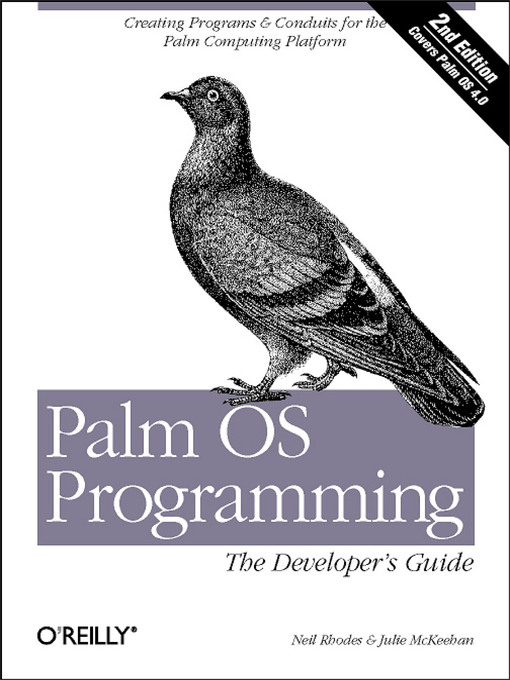With more than 16 million PDAs shipped to date, Palm has defined the market for handhelds, having dominated this class of computing devices ever since it began to outpace competitors six years ago. The company's strength is the Palm OS, and developers loyal to this powerful and versatile operating system have created more than 10,000 applications for it. Devices from Handspring, Sony, Symbol, HandEra, Kyocera, and Samsung now use Palm OS, and the number of registered Palm Developers has jumped to 130,000.
If you know C or C++, and want to join those who are satisfying the demand for wireless applications, then Palm OS Programming: The Developer's Guide, Second Edition is the book for you. With expanded coverage of the Palm OS—up to and including the latest version, 4.0—this new edition shows intermediate to experienced C programmers how to build a Palm application from the ground up. There is even useful information for beginners.
Everything you need to write a Palm OS application is here, from user interface design, to coding a handheld application, to writing an associated desktop conduit. All the major development environments are discussed, including commercial products such as Metroworks CodeWarrior, Java-based environments such as Sun KVM and IBM VisualAge Micro Edition, and the Free Software Foundation's PRC-Tools or GCC. The focus, however, is C programming with CodeWarrior and PRC-Tools. New additions to the second edition include:
A tutorial that takes a C programmer through the installation of necessary tools and the creation of a small handheld application. A new chapter on memory, with a comprehensive discussion of the Memory Manager APIs. Greatly expanded discussions of forms, forms objects, and new APIs for the Palm OS. Updated chapters on conduits that reflect the newer Conduit Development Kit.The best-selling first edition of this book is still considered the definitive guide for serious Palm programmers; it's used as the basis of Palm's own developer training materials. Our expanded second edition promises to set the standard for the next generation of Palm developers.

